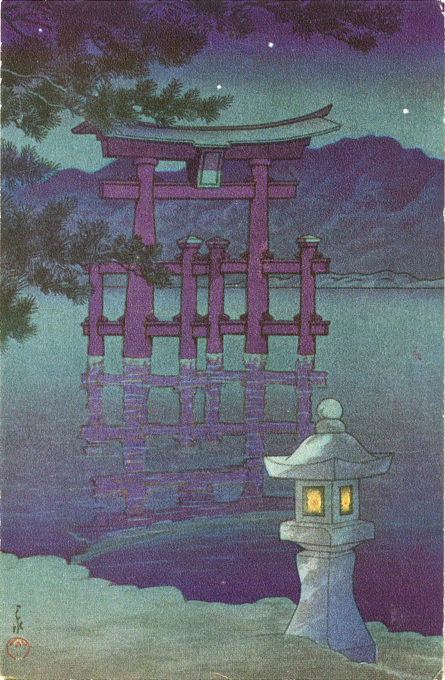
Torii and toro, “Starlit Night, Miyajima”, a 1928 postcard reproduction of a shin-hanga woodblock print by Hasui Kawase. Published by Watanabe Shōzaburō (S. Watanabe), the original print was produced in 1924 by Hasui as part of his third edition travelogue Souvenirs of Travel.
See also:
Miyajima (Mikado) Hotel, Miyajima, c. 1910.
The Big Torii from Matsubara Itsukushima, Aki, c. 1910.
The term shin-hanga (lit., “new prints”) was coined in 1915 by Watanabe Shōzaburō (1885–1962), the most important publisher of shin-hanga. Directed primarily to foreign markets, shin-hanga prints appealed to Western tastes for nostalgic and romanticized views of Japan, and shin-hanga prints flourished and enjoyed immense popularity overseas.
Publishers also often produced miniature images of artist’s larger print designs (e.g. in postcard form). It is likely that the artist was no longer involved with the print production after a larger design was miniaturized. In the case of many shin-hanga prints, simplification had already occurred, as an original painting or woodblock print had been adapted to the print medium. With further miniaturization, the print moved a step further from the artist’s brush. Yet the carving and printing were not compromised. Indeed, one could argue that an additional level of skill was required for a miniature print to favorably impact the viewer.
During the forty years of his artistic career, Hasui Kawase worked closely with Watanabe. Hasui’s works became widely known in the West through American connoisseur Robert O. Muller. In 1956, Hasui was named a Living National Treasure in Japan. He passed away in 1957.

